Birds, butterflies and nature buffs drawn to wildflowers at Grandview Prairie
BY agfc
ON 05-22-2019
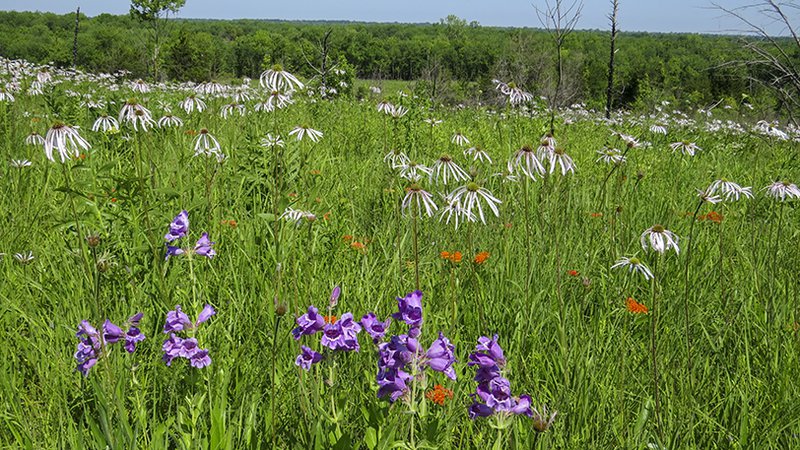
May 22, 2019
COLUMBUS, ARKANSAS — Garden centers throughout the state are bursting at the seams with customers planting their favorite varieties of showy flowers each May, but Mother Nature may have them all beaten with her own displays of prairie flowers popping at Rick Evans Grandview Prairie Wildlife Management Area in Columbus. Now is the time to get out and enjoy the beauty of native wildflowers, thanks to an easy-to-follow auto tour, developed by the Arkansas Game and Fish Commission.
The auto tour includes 10 stops along the 4,885-acre tract of blackland prairie on the WMA. The all-season gravel road is easy for any standard car or truck to travel upon.
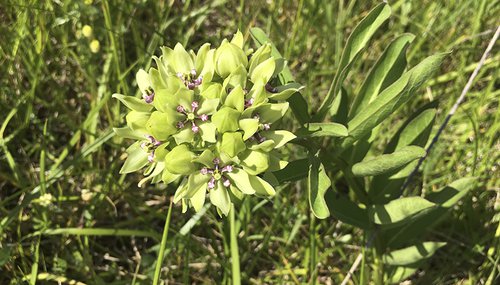
Kirsten Bartlow, AGFC watchable wildlife coordinator, says each stop has interpretive signs that tell a little bit about the history of the area, what makes it so special and the wildlife species visitors are likely to see.
“There’s a little bit of something for everyone here,” Bartlow said. “We talk about prehistoric time, when the area was covered by an inland sea to when it was the home of the Caddo people, to when it was a hunting lodge.”
Visitors are encouraged to venture off the beaten path to explore the area on foot. A smartphone-friendly downloadable map of the auto tour is available at www.agfc.com/en/explore-outdoors/wildlife-viewing/nature-trails/rick-evans-grandview-prairie-wma-auto-tour. The map works through an app called Avenza. Simply download the app, then download the map from the site. The map will be stored on your phone, and uses the phone’s internal GPS system to place a dot on your location.
“Even if you lose cellular signal, the locator on the map still works,” Bartlow said. “The AGFC has geo-referenced maps like this for many of its watchable wildlife trails and water trails.”
The brilliant display of native wildflowers owes its beauty to the rich soils of the Blackland Prairie. Once sprawling from Texas to Canada, this band of fertile ground was home to the Caddo Indians. The productivity of the soil made it highly prized by settlers, ranchers and farmers, and nearly all of this prairie type was taken into private ownership during the 1900s. The AGFC has been able to purchase and conserve 4,885 acres of this prairie here, making it the largest publicly owned tract of this threatened landscape left.
“The rich, black soil grows amazing wildflowers, and it serves as the base for the diversity in wildlife here,” said Kirsten Bartlow, AGFC watchable wildlife program coordinator. “You’ll see many species of butterflies, songbirds and all sorts of wildlife making use of the habitat provided. Indigo buntings, painted buntings, summer tanagers and many other colorful songbirds may make an appearance during your visit. This will go on throughout spring, summer and even into fall.”
Among the showy flowers are many varieties of milkweed, the host plant for the monarch butterfly. These butterflies, along with many other insects and birds, are responsible for pollinating crops throughout the United States.
“Helping pollinators is extremely important,” Bartlow said. “Even if you never set foot on the property, its benefits reach you through the continued pollination of agricultural crops.”
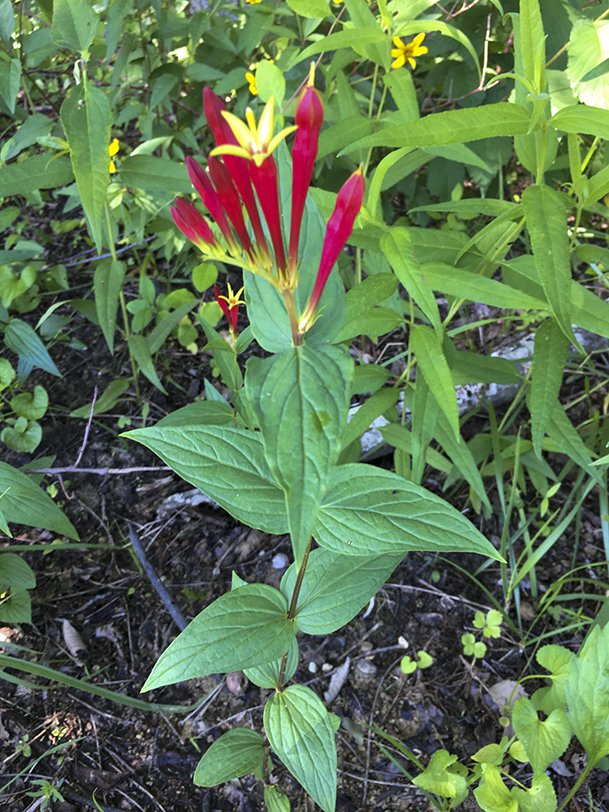 Indian Pink
Indian Pink
Bartlow says the fertile soil also translates into some of the biggest deer in southwest Arkansas, which are managed through an archery season each year that’s limited through a permit system.
“Those deer also make use of all the low-lying vegetation in spring and summer, and you may catch a glimpse of one of these impressive bucks while still in velvet,” Bartlow said.
Eric Maynard, assistant chief of education facilities for the AGFC, says the auto tour and wildflowers are just the beginning of experiences waiting for visitors at Grandview. The AGFC also staffs the Rick Evans Grandview Prairie Education Center at the site, which offers programs for schools and families by appointment as well as a shotgun range.
“Those flowers may attract you to the area, but there’s a whole lot more to do once you’re here,” Maynard said. “There are displays of fossils from prehistoric times, collections of Caddo pottery found on the site and even a few display animals to view once you get here.”
Visitors can stop by the education center and check out canoes to paddle on the two small lakes, and anglers are encouraged to wet a line while visiting. The lakes have been stocked with Florida-strain largemouth bass, and many trophy-quality fish have been seen by fisheries crews during their survey work.
The range offers shotgunners the opportunity to try their hand at trap, skeet and five-stand, which sends clay targets in a variety of directions to keep shooters on their toes.
“We sell ammunition at the center, and even have a few shotguns available to check out for free if you decide to try it out once you get here,” Maynard said.
The education center is open 8 a.m. to 5 p.m., Monday through Friday, and visitors are encouraged to call ahead to schedule special programs to make the most of the experience.
For more information, visit the education center’s website at www.grandviewprairiecec.com.
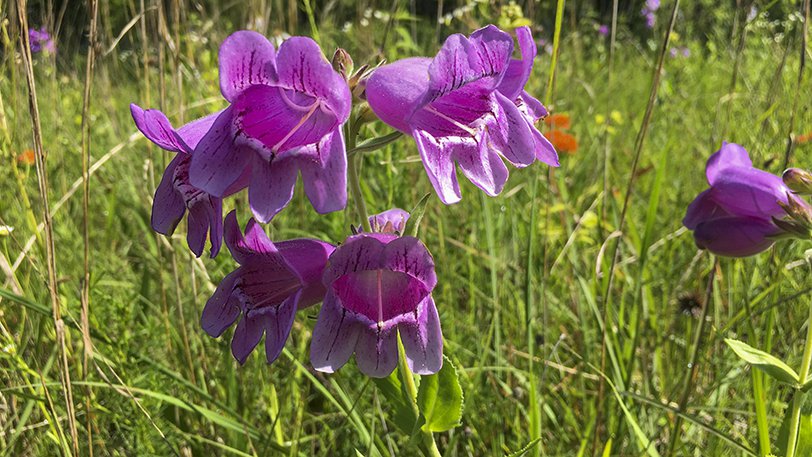 Showy Beardtongue
Showy Beardtongue
Recent News

Arkansas Wildlife Weekly Fishing Report
Jul. 10, 2025
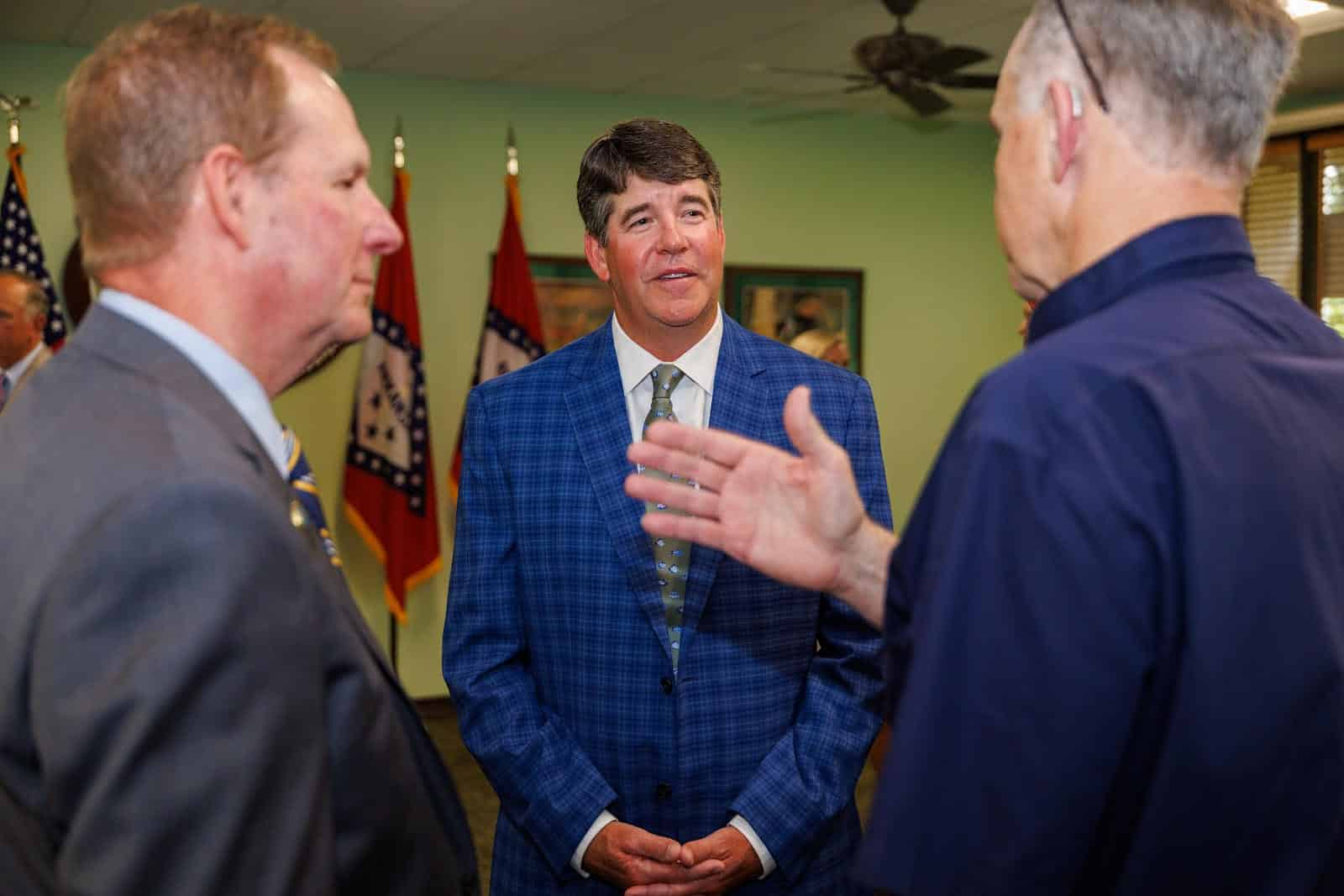
Lonoke aquaculturist named to AGFC
Jul. 10, 2025
Subscribe to Our Weekly Newsletter E-mails
Don’t miss another issue. Sign up now to receive the AGFC Wildlife Weekly Newsletter in your mailbox every Wednesday afternoon (Waterfowl Reports are published weekly during waterfowl season and periodically outside the season). Fishing Reports arrive on Thursdays. Fill in the following fields and hit submit. Thanks, and welcome!
